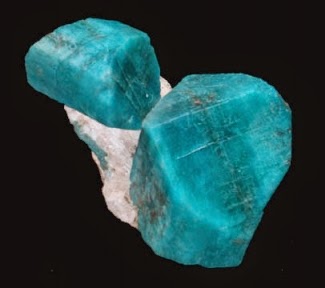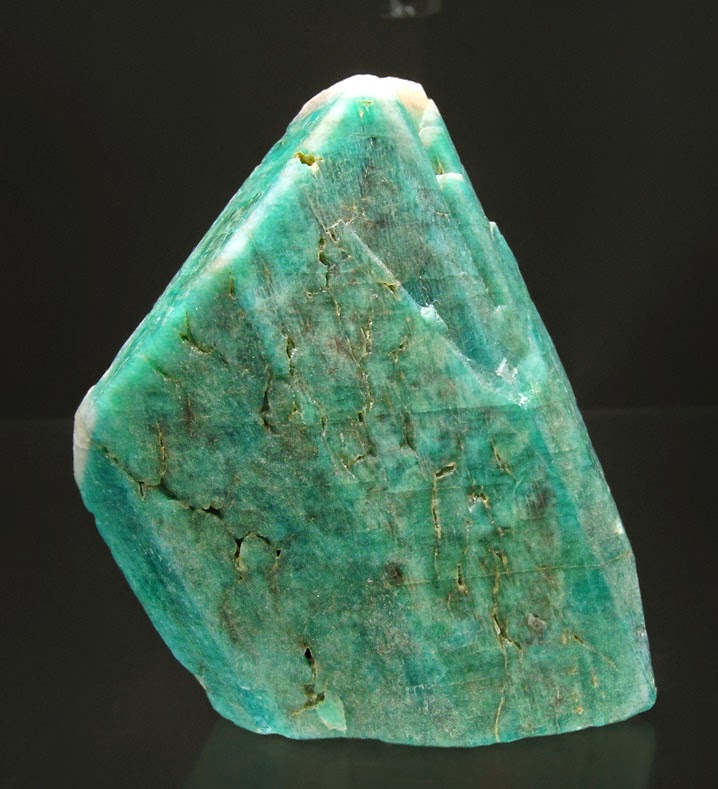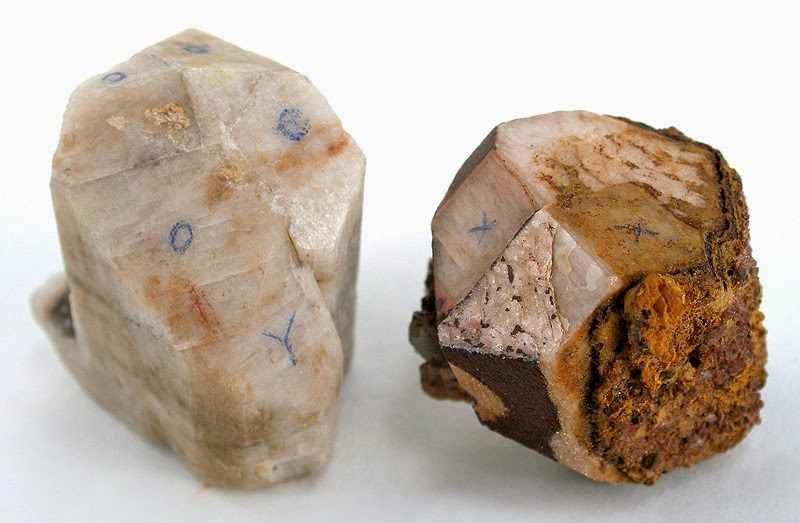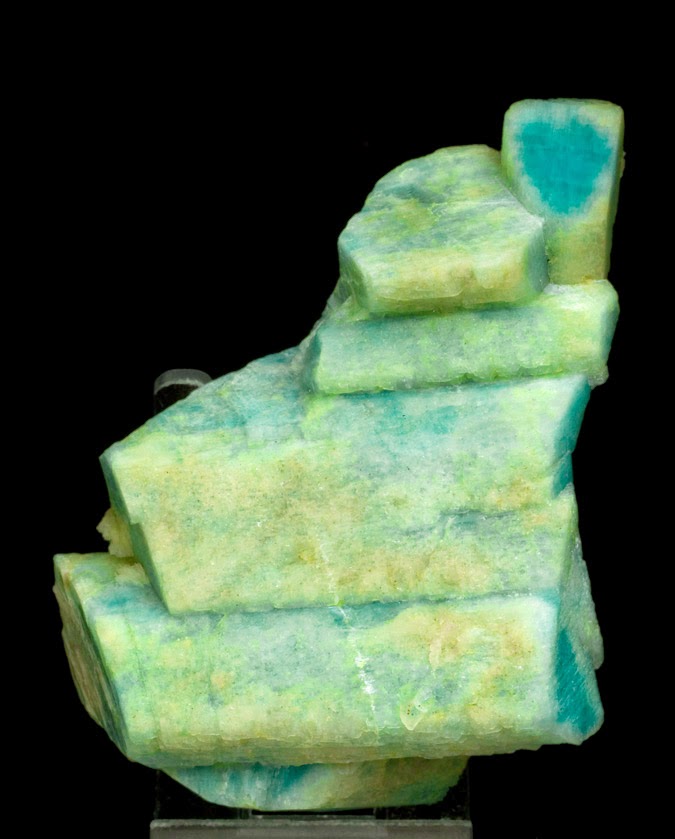
Chemical Formula: KAlSi3O8
Locality: Common world wide occurrences.
Name Origin: From the Greek mikron – “little” and klinein – “to stoop.”
Microcline (KAlSi3O8) is an important igneous rock-forming tectosilicate mineral. It is a potassium-rich alkali feldspar. Microcline typically contains minor amounts of sodium. It is common in granite and pegmatites. Microcline forms during slow cooling of orthoclase; it is more stable at lower temperatures than orthoclase. Sanidine is a polymorph of alkali feldspar stable at yet higher temperature. Microcline may be clear, white, pale-yellow, brick-red, or green; it is generally characterized by cross-hatch twinning that forms as a result of the transformation of monoclinic orthoclase into triclinic microcline.
Microcline may be chemically the same as monoclinic orthoclase, but because it belongs to the triclinic crystal system, the prism angle is slightly less than right angles; hence the name “microcline” from the Greek “small slope.” It is a fully ordered triclinic modification of potassium feldspar and is dimorphous with orthoclase. Microcline is identical to orthoclase in many physical properties; it can be distinguished by x-ray or optical examination; viewed under a polarizing microscope, microcline exhibits a minute multiple twinning which forms a grating-like structure that is unmistakable.
History
Discovery date : 1830
Town of Origin : FREDRIKSVARN
Country of Origin : NORVEGE
Optical properties
Optical and misc. Properties : Translucent to transparent
Refractive Index : from 1,51 to 1,53
Axial angle 2V : 66-103°
Physical Properties
Cleavage: {001} Perfect, {010} Good
Color: Bluish green, Green, Gray, Grayish yellow, Yellowish.
Density: 2.56
Diaphaneity: Translucent to transparent
Fracture: Uneven – Flat surfaces (not cleavage) fractured in an uneven pattern.
Hardness: 6 – Orthoclase
Luminescence: Fluorescent, Short UV=cherry red.
Luster: Vitreous (Glassy)
Streak: white
Photos :













